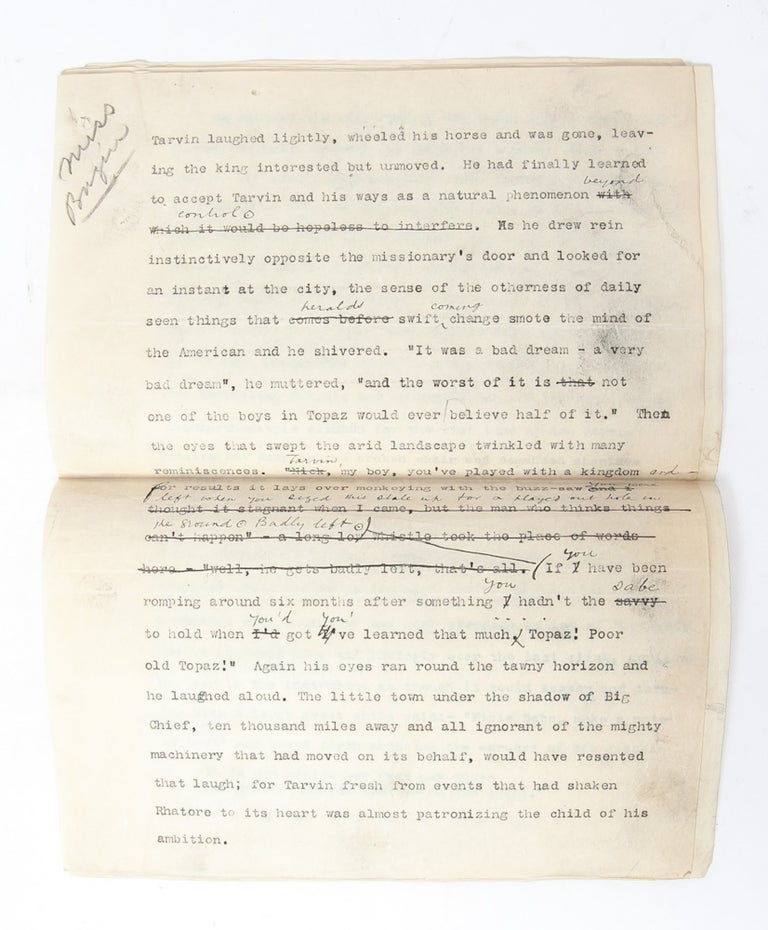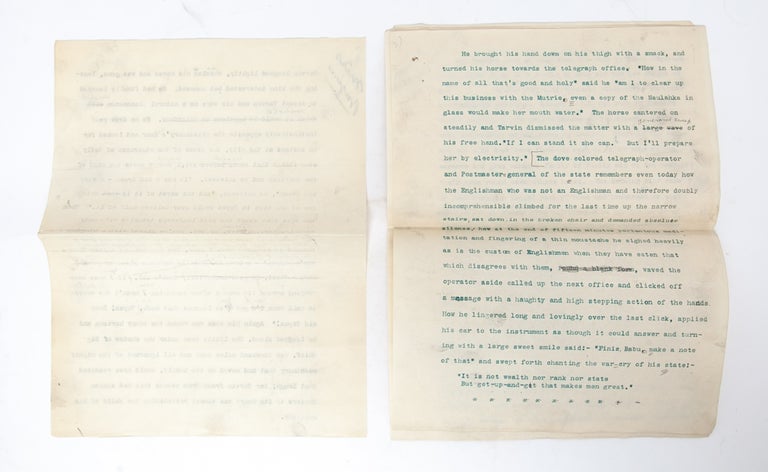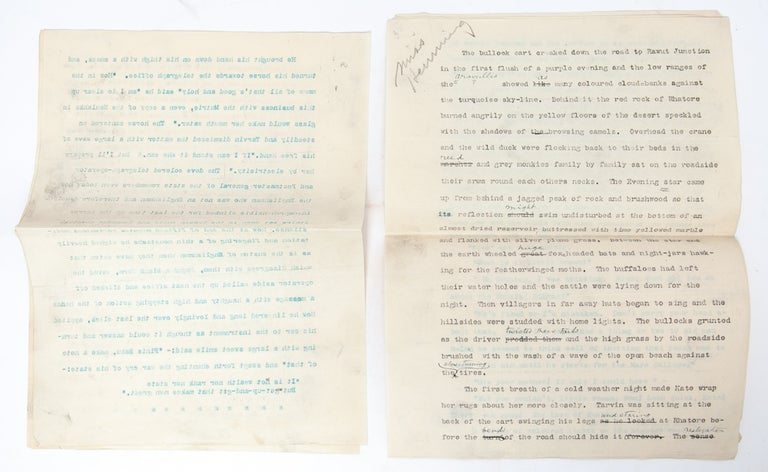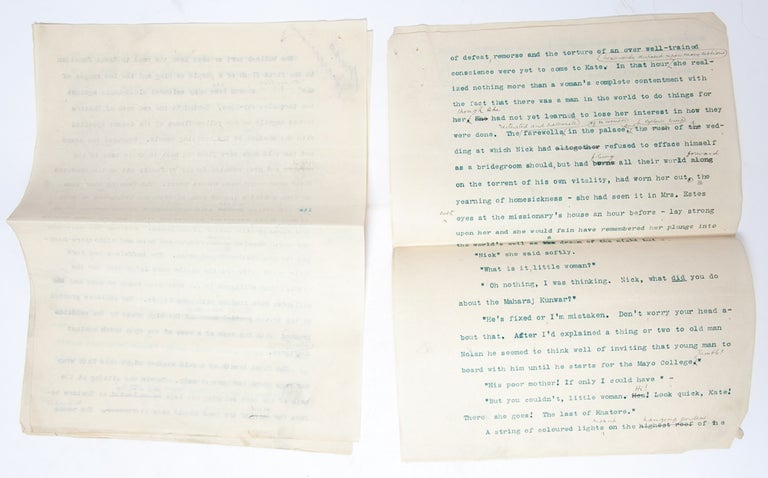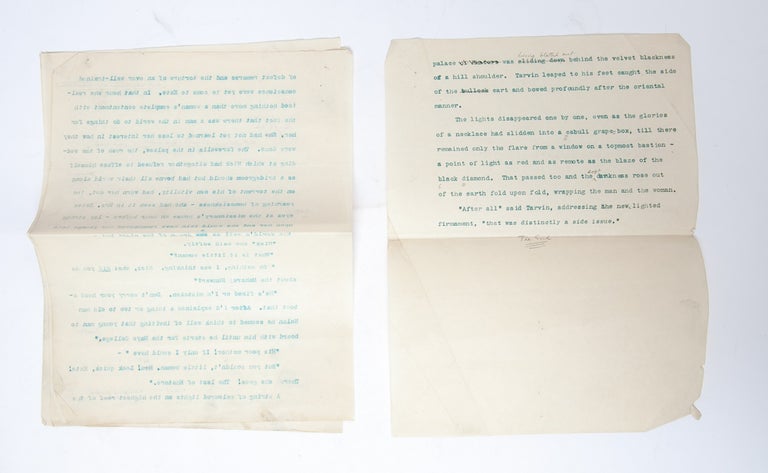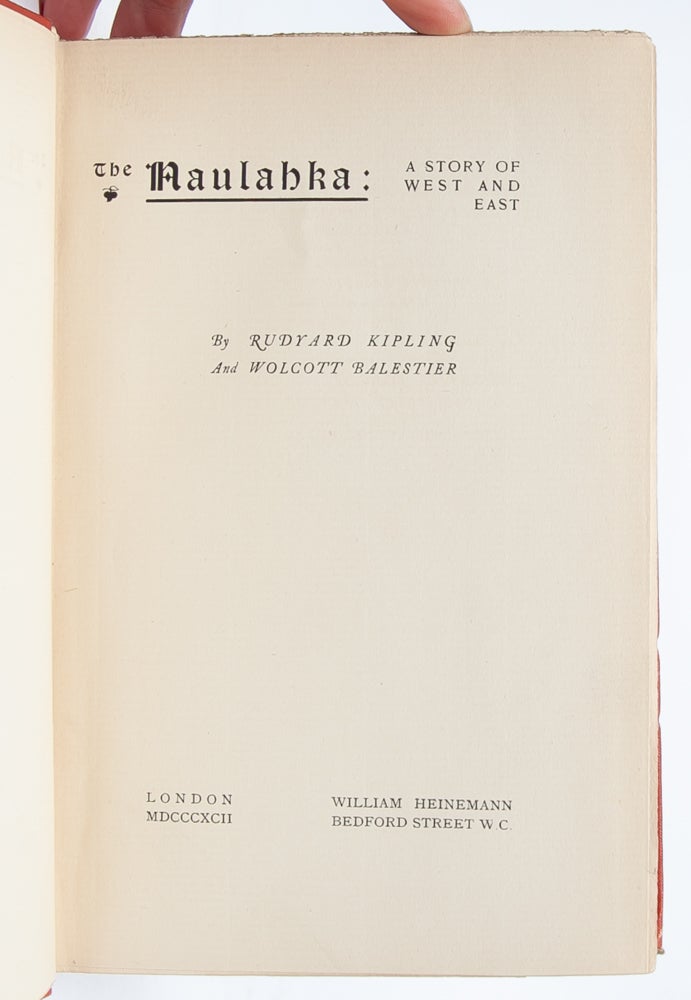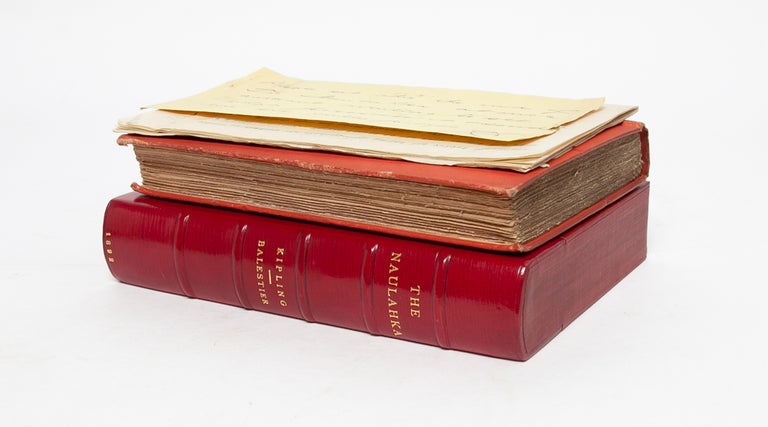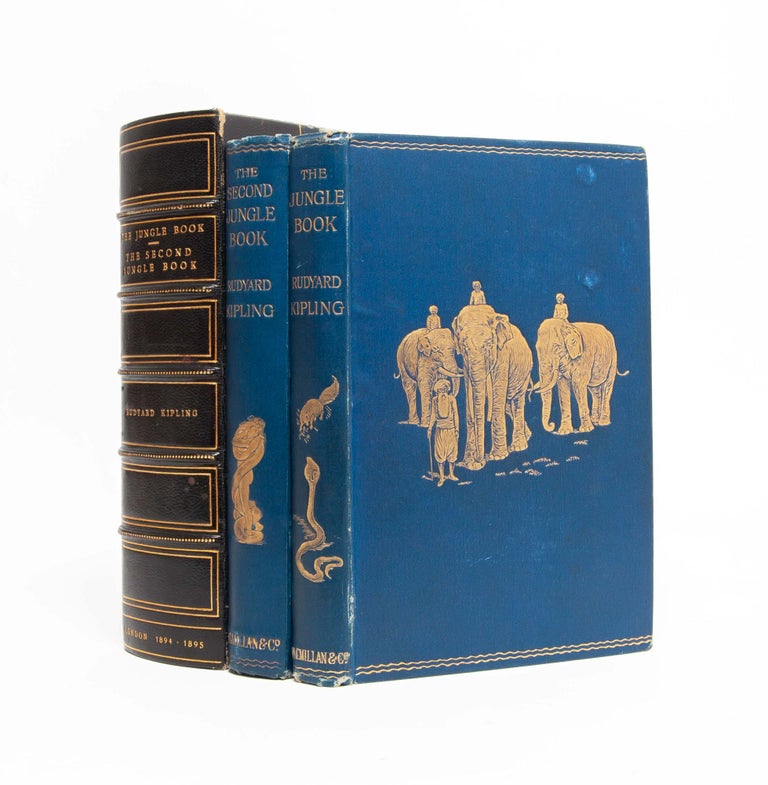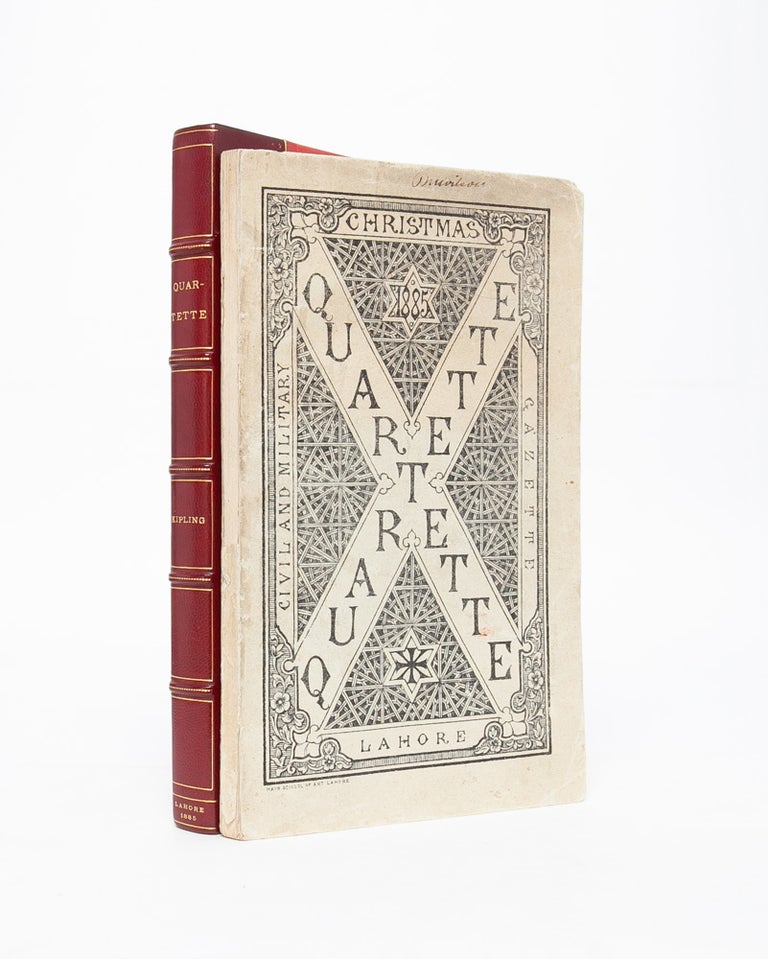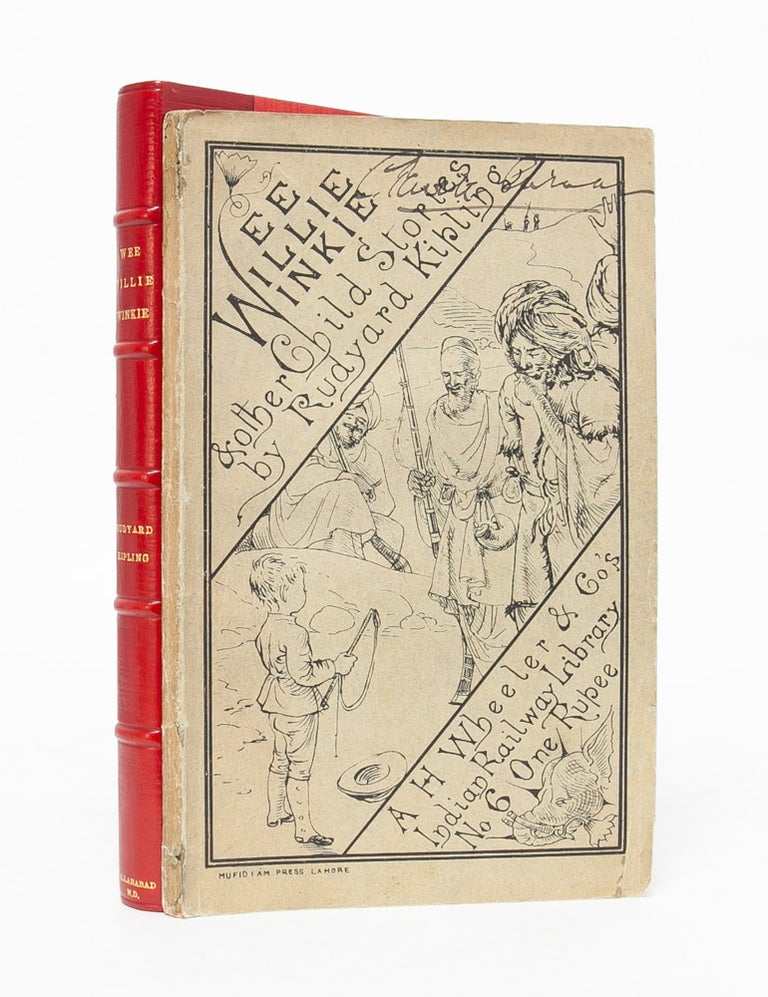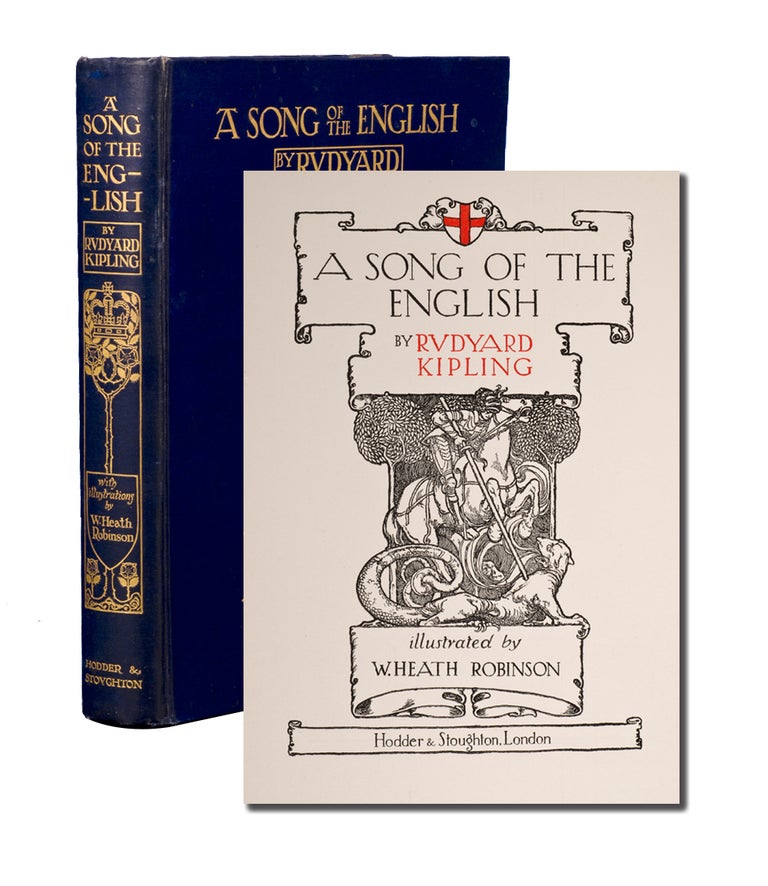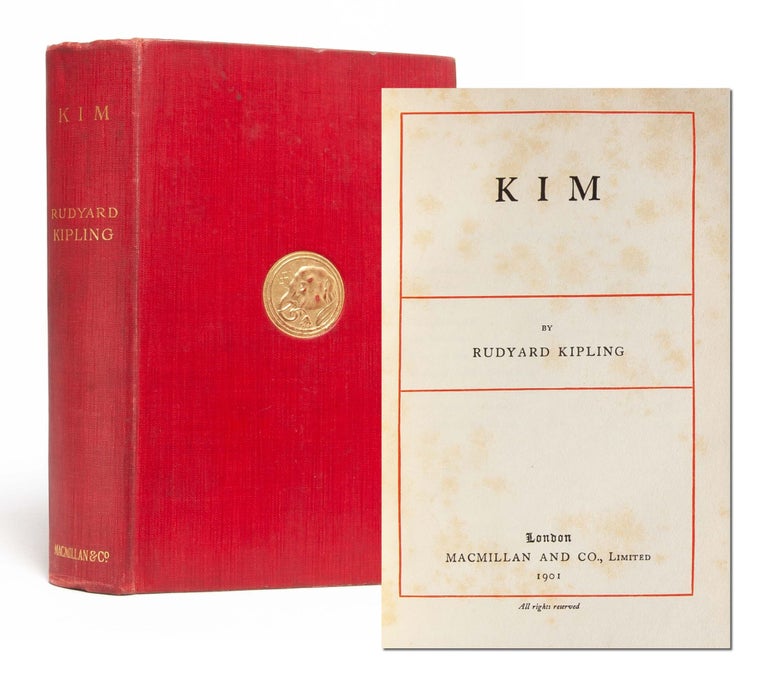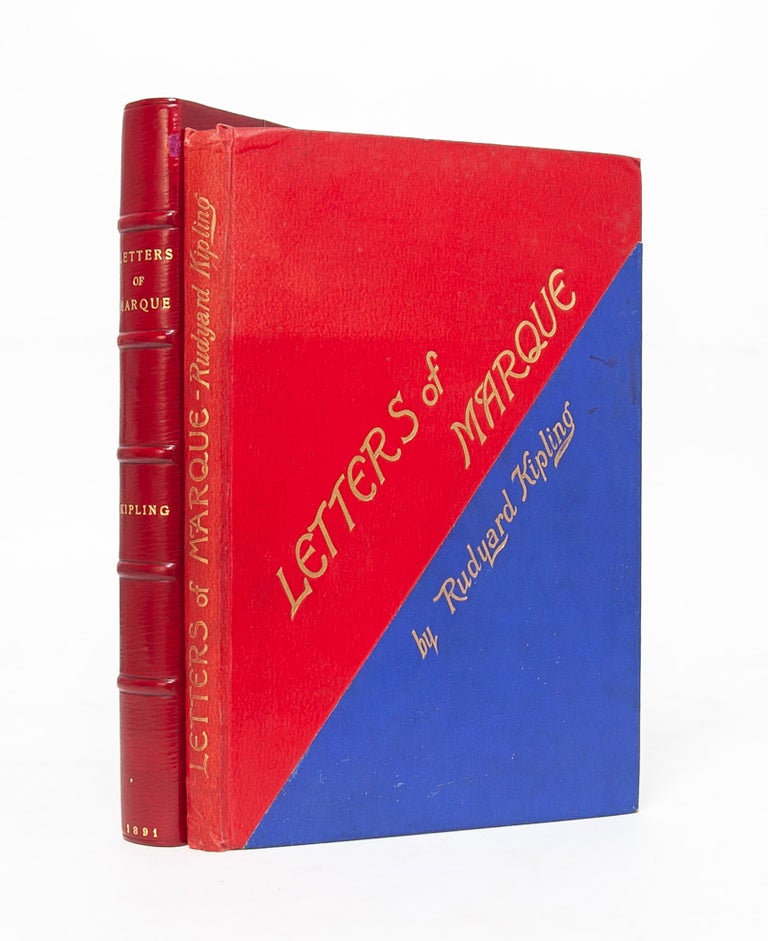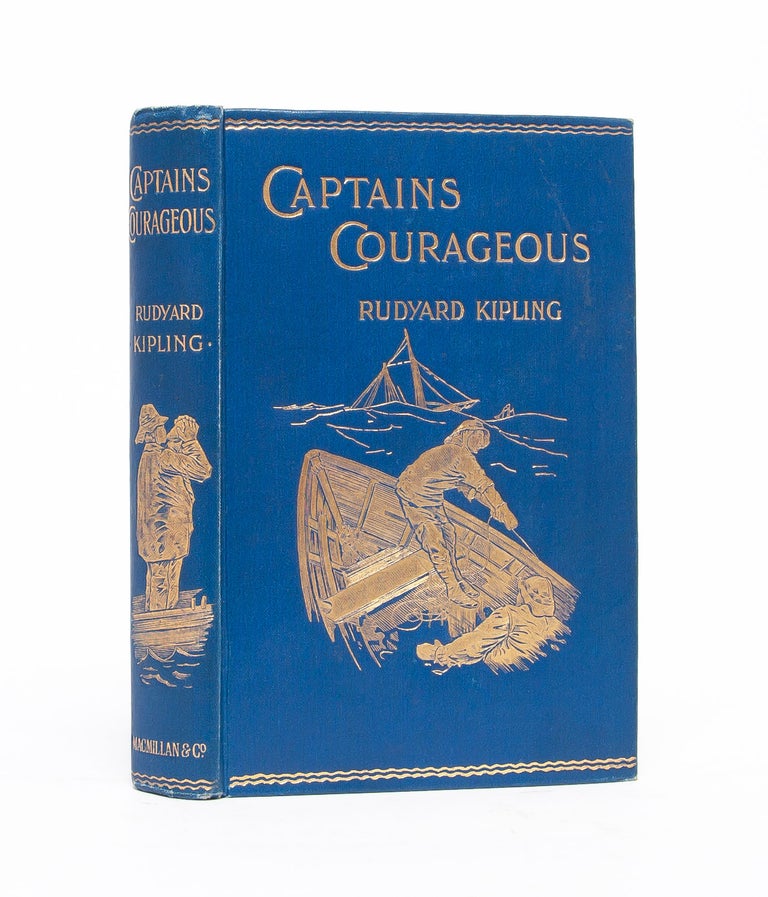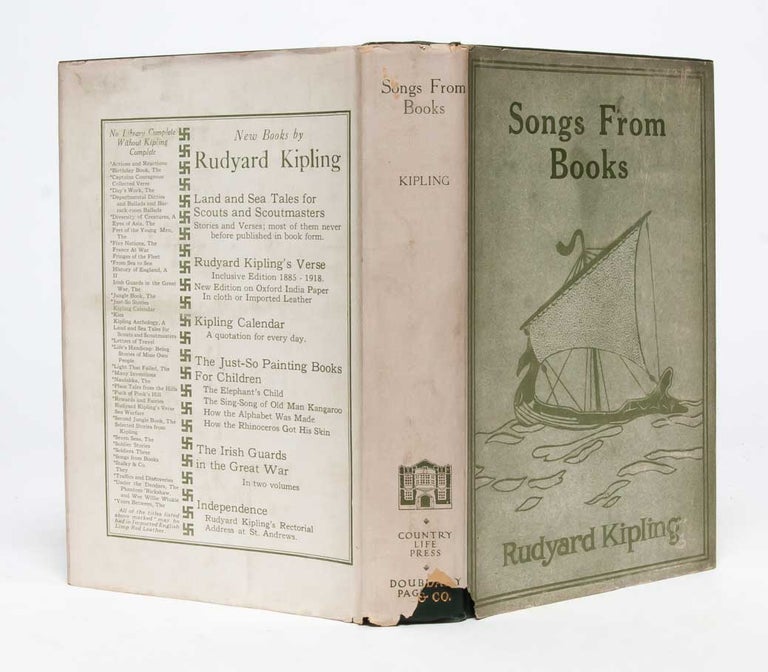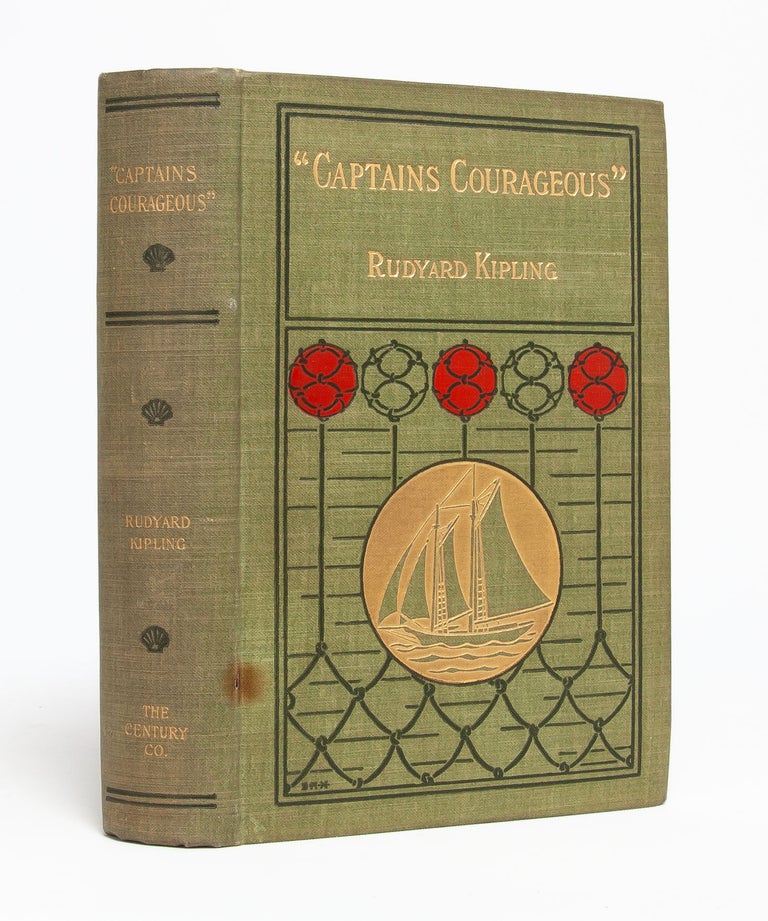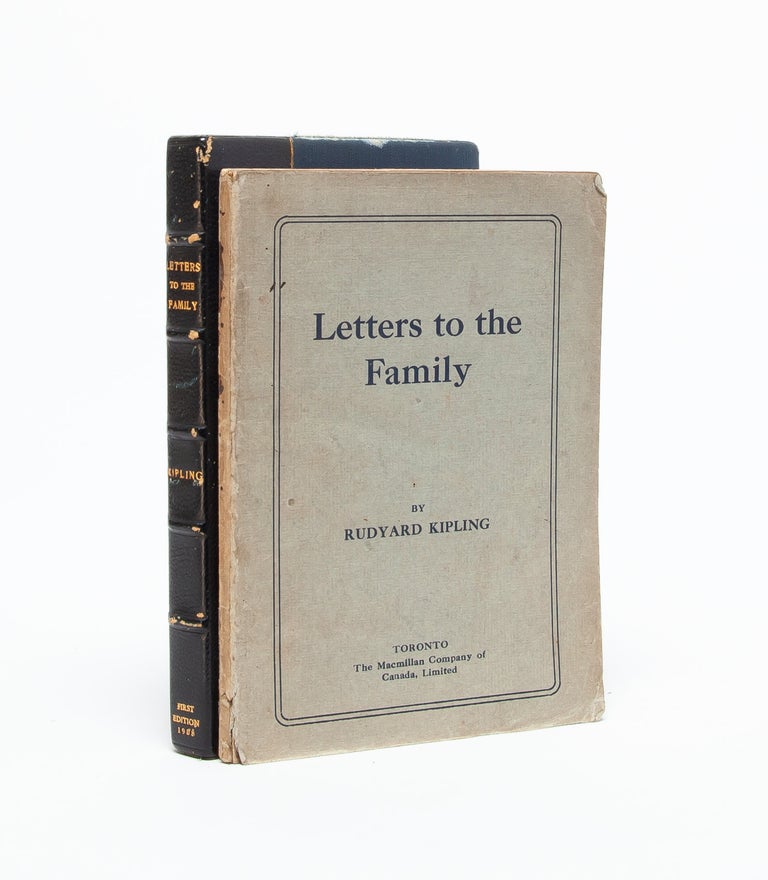Typed Manuscript for the Ending of The Naulahka: A Story of West and East
London: William Heinemann, 1892.
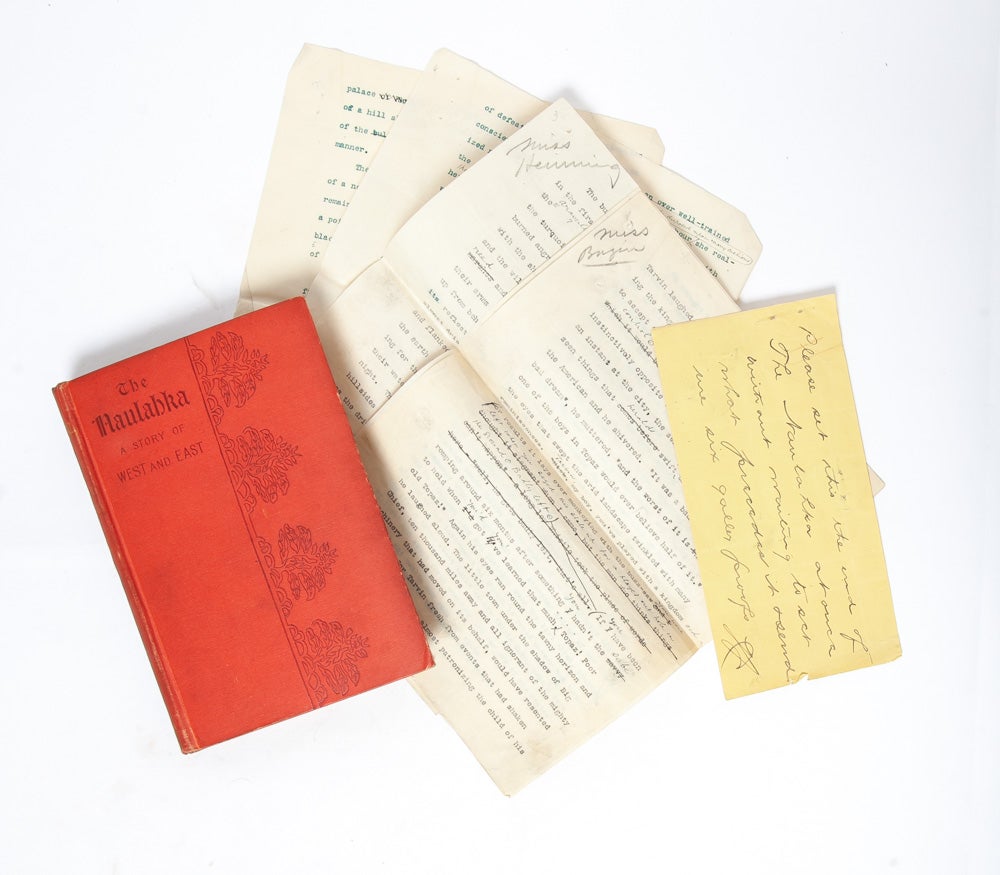

Typed Manuscript for the Ending of The Naulahka: A Story of West and East
London: William Heinemann, 1892. First edition. Typed manuscript carbons in black and blue ink, five standard sized leaves. With an autograph note from Kipling's literary agent, A. P. Watt: "Please set this the end of The Naulahka at once without waiting to set what precedes it and send me six galley proofs." About 75 words of changes and corrections, mostly grammatical, but a few substantive changes as well. With a first edition of the book in Near Fine condition, with just a bit of toning to the spine and wear at the extremities. Housed in a custom quarter-red leather slipcase with chemise.
"In 1892, Rudyard Kipling married Caroline Balestier, the sister of Wolcott Balestier, an American publisher and writer with whom he had collaborate on The Naulahka (1892), a facile and unsuccessful romance" (Britannica). Despite the work's commercial disappointments, Kipling felt a deep fondness both for the narrative and for the collaborator who "would have become his brother-in-law if he hadn't died before the wedding" and before the book's completion (MacDonald). Kipling named his Vermont residence Naulahka in tribute.
Critics often note the white supremacist and misogynist overtones of the novel as a key reason for why it has not been enshrined in the larger Kipling canon. Yet scholars also mention that in his collaboration with Balestier, Kipling also produced one of his only works centered on a female community and women's experiences. In creating the protagonist Nick Tarvin, who voices some of the book's most problematic positions, Kipling and Balestier produced "a great creation, but with a distinctly shabby moral sense. One of the great satisfactions at the end of the novel is his realization that he cannot have everything, no matter how clever he has planned things" (MacDonald). This ending, in fact, was a central focus for Kipling, and one which the present manuscript sheds light. This heavily edited typescript was something that Kipling wanted, according to his editor's letter, "set at the end...at once, without waiting to set what precedes it." Here, we get the opportunity to see Kipling's creative care in providing a meaningful final lesson for Nick and for the reader, as well as his dedication in wrapping up a project that was never intended to be a solo work. Near Fine (Item #4863)

